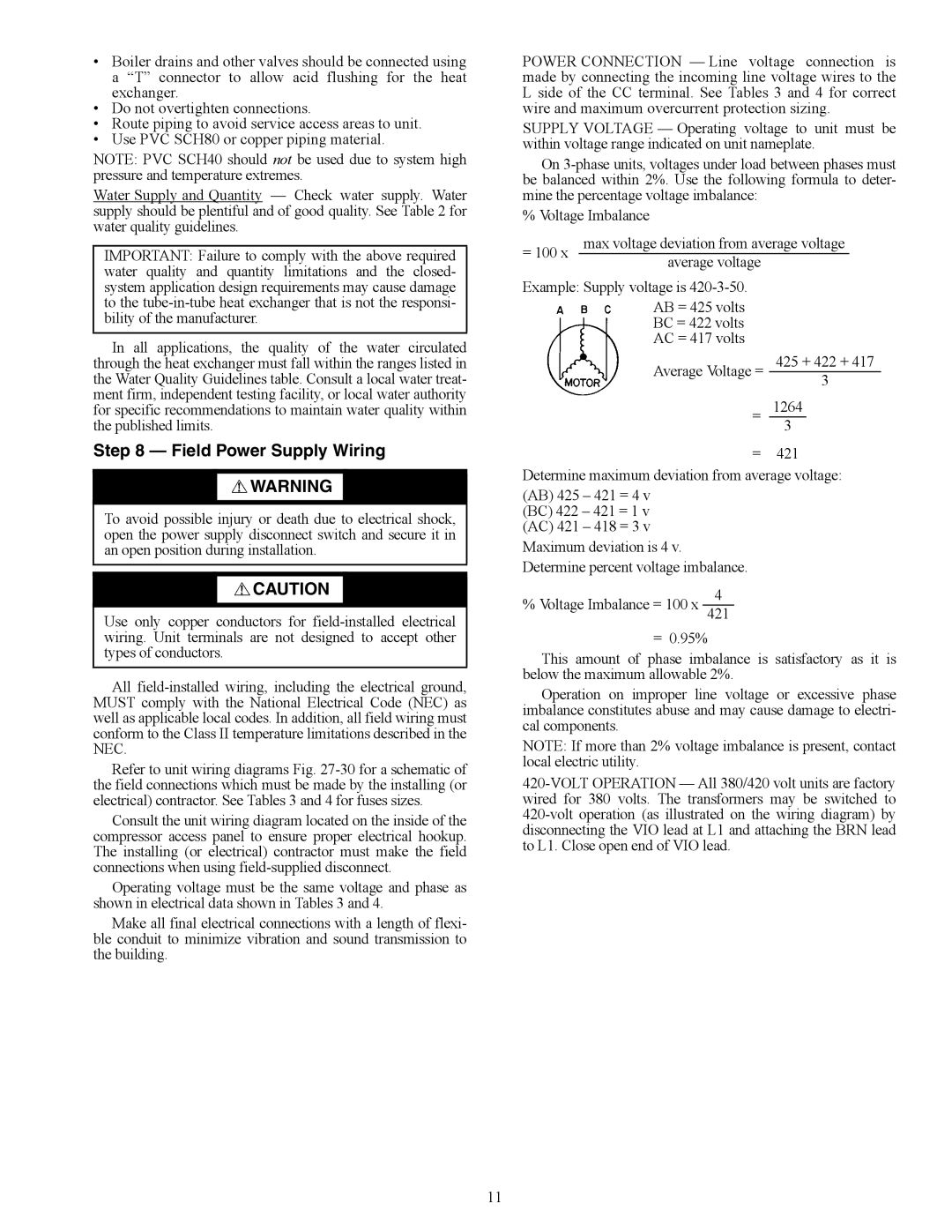
•Boiler drains and other valves should be connected using a “T” connector to allow acid flushing for the heat exchanger.
•Do not overtighten connections.
•Route piping to avoid service access areas to unit.
•Use PVC SCH80 or copper piping material.
NOTE: PVC SCH40 should not be used due to system high pressure and temperature extremes.
Water Supply and Quantity — Check water supply. Water supply should be plentiful and of good quality. See Table 2 for water quality guidelines.
IMPORTANT: Failure to comply with the above required water quality and quantity limitations and the closed- system application design requirements may cause damage to the
In all applications, the quality of the water circulated through the heat exchanger must fall within the ranges listed in the Water Quality Guidelines table. Consult a local water treat- ment firm, independent testing facility, or local water authority for specific recommendations to maintain water quality within the published limits.
Step 8 — Field Power Supply Wiring
![]() WARNING
WARNING
To avoid possible injury or death due to electrical shock, open the power supply disconnect switch and secure it in an open position during installation.
![]() CAUTION
CAUTION
Use only copper conductors for
All
Refer to unit wiring diagrams Fig.
Consult the unit wiring diagram located on the inside of the compressor access panel to ensure proper electrical hookup. The installing (or electrical) contractor must make the field connections when using
Operating voltage must be the same voltage and phase as shown in electrical data shown in Tables 3 and 4.
Make all final electrical connections with a length of flexi- ble conduit to minimize vibration and sound transmission to the building.
POWER CONNECTION — Line voltage connection is made by connecting the incoming line voltage wires to the L side of the CC terminal. See Tables 3 and 4 for correct wire and maximum overcurrent protection sizing.
SUPPLY VOLTAGE — Operating voltage to unit must be within voltage range indicated on unit nameplate.
On
% Voltage Imbalance
= 100 x | max voltage deviation from average voltage | ||
| average voltage |
|
|
Example: Supply voltage is |
|
| |
| AB = 425 volts |
|
|
| BC = 422 volts |
|
|
| AC = 417 volts |
|
|
| Average Voltage = | 425 + 422 + 417 | |
| 3 |
| |
|
|
| |
| = | 1264 |
|
|
| 3 |
|
= 421
Determine maximum deviation from average voltage:
(AB) 425 – 421 = 4 v (BC) 422 – 421 = 1 v (AC) 421 – 418 = 3 v
Maximum deviation is 4 v. Determine percent voltage imbalance.
% Voltage Imbalance = 100 x 4214
= 0.95%
This amount of phase imbalance is satisfactory as it is below the maximum allowable 2%.
Operation on improper line voltage or excessive phase imbalance constitutes abuse and may cause damage to electri- cal components.
NOTE: If more than 2% voltage imbalance is present, contact local electric utility.
11
